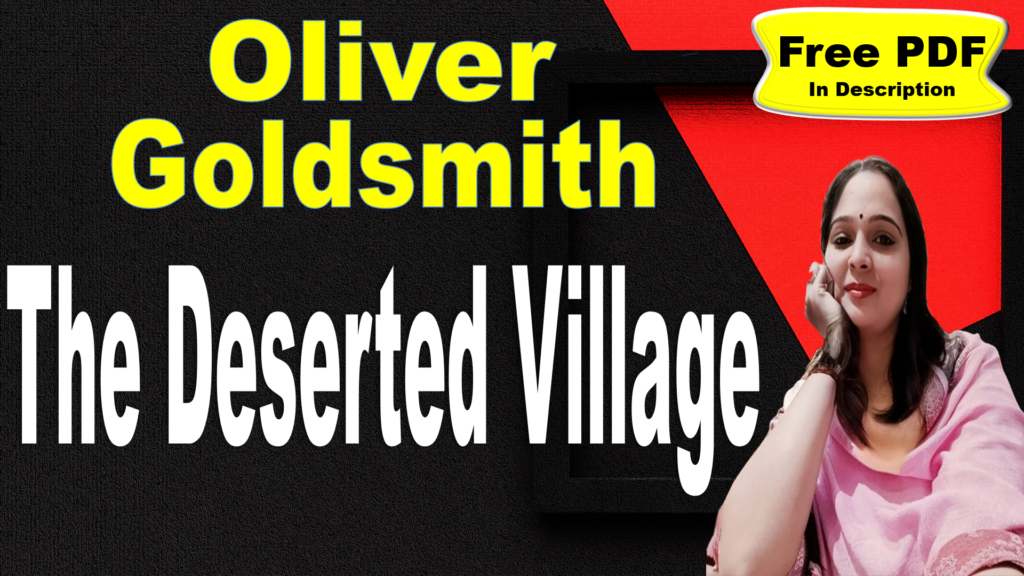
The Deserted Village Key Points
Key Points
Author
Name: Oliver Goldsmith
Background: An Irish novelist, playwright, and poet known for his works that often reflect themes of simplicity, rural life, and social commentary.
Structure, Form and Rhyme Scheme
Structure
The poem comprises 430 lines, which allows for an extensive exploration of themes and ideas.
It is organized into heroic couplets, contributing to a rhythmic flow throughout the piece.
Form
Heroic Couplet: Each couplet consists of two lines that rhyme with each other (AABBCC…), and the lines are written in iambic pentameter, which means each line typically has ten syllables, alternating between unstressed and stressed syllables.
Georgic and Pastoral Poetry: The poem embodies the characteristics of georgic poetry, focusing on rural life and agriculture, as well as pastoral poetry, emphasizing the beauty and simplicity of nature and countryside life.
Augustan Verse: It is representative of Augustan verse, known for its clarity, order, and reason, reflecting the ideals of the Neoclassical movement.
Rhyme Scheme
AABBCC… Rhyme Scheme: The poem employs a consistent couplet rhyme scheme, where each pair of lines rhymes, contributing to the musical quality and enhancing its lyrical flow.
Speaker
Identity: The speaker is a contemplative observer, possibly a voice of the poet himself, reflecting on the contrast between rural virtues and the allure of luxury.
Perspective: The speaker expresses a deep sense of loss and concern over the decline of simple, genuine values in the face of societal changes.
Setting
Physical Setting: The poem moves between rural landscapes and urban centers, illustrating the shift from a life of simplicity and virtue to one of luxury and excess.
Temporal Setting: The era reflects a time of change, with industrialization and social upheaval influencing traditional values.
Theme
Loss of Virtue: The poem emphasizes the decline of rural virtues and genuine human connections in the wake of luxury and excess.
Critique of Luxury: Goldsmith critiques how the pursuit of wealth and social status corrupts societal values and individual happiness.
Plot
Narrative Arc: The poem presents a reflective journey, starting with observations of rural life, transitioning to critiques of urban luxury, and concluding with a lament for the loss of virtue amidst wealth and decadence.
Tone
Melancholic and Reflective: The tone is sorrowful and contemplative, filled with nostalgia for a simpler, more virtuous way of life.
Critical: There is also a critical tone towards the pursuit of luxury and its impact on society.
Style
Imagery: Vivid imagery is used to contrast the beauty of nature with the harsh realities of urban life and luxury.
Personification: The poem personifies concepts like poetry and virtue, emphasizing their importance and fragility.
Rhetorical Questions: Goldsmith employs rhetorical questions to engage the reader and provoke thought about societal values.
Message
True Happiness vs. Material Wealth: The poem conveys the message that true happiness and contentment are found in simple, genuine experiences rather than in the pursuit of wealth and luxury.
Call for Reflection: It urges readers to reflect on the consequences of abandoning rural virtues and the dangers of being seduced by the superficial pleasures of life.





